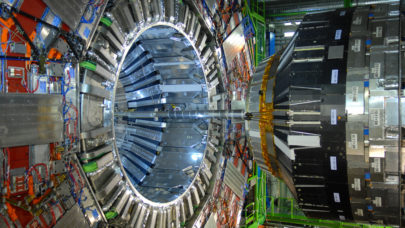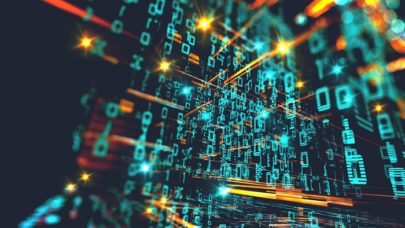
Graphcore Launches Wafer-on-Wafer ‘Bow’ IPU
March 3, 2022
Graphcore introduced its AI-focused, PCIe-based Intelligent Processing Units (IPUs) six years ago. Since then, the company has done anything but slow down, announcing a second generation of IPUs in 2020 and, over the years, larger and larger IPU-based “IPU-POD” systems — most recently the IPU-POD128 and the IPU-POD256, both announced just a few months... Read more…

Graphcore Introduces Larger-Than-Ever IPU-Based Pods
October 22, 2021
After launching its second-generation intelligence processing units (IPUs) in 2020, four years after emerging from stealth, Graphcore is now boosting its produc Read more…

Hot Chips: Here Come the DPUs and IPUs from Arm, Nvidia and Intel
August 25, 2021
The emergence of data processing units (DPU) and infrastructure processing units (IPU) as potentially important pieces in cloud and datacenter architectures was Read more…

Intel Debuts ‘Infrastructure Processing Unit’ as Part of Broader XPU Strategy
June 15, 2021
To boost the performance of busy CPUs hosted by cloud service providers, Intel Corp. has launched a new line of Infrastructure Processing Units (IPUs) that take Read more…

Graphcore’s IPU Tackles Particle Physics, Showcasing Its Potential for Early Adopters
August 27, 2020
Graphcore means business – and it should, given the paradigm shift it wants to provoke. The ambitious startup, which emerged from stealth in 2016, makes Intelligent Processing Units, or IPUs: massive processors specifically designed for AI computing, which Graphcore intends to be “the worldwide standard for machine intelligence compute.” Read more…

Hardware Acceleration of Recurrent Neural Networks: the Need and the Challenges
July 27, 2020
Recurrent neural networks (RNNs) have shown phenomenal success in several sequence learning tasks such as machine translation, language processing, image captio Read more…

Graphcore Readies Launch of 16nm Colossus-IPU Chip
July 20, 2017
A second $30 million funding round for U.K. AI chip developer Graphcore sets up the company to go to market with its “intelligent processing unit” (IPU) in Read more…

Here’s What a Neural Net Looks Like On the Inside
February 15, 2017
Ever wonder what the inside of a machine learning model looks like? Today Graphcore released fascinating images that show how the computational graph concept ma Read more…

- Click Here for More Headlines

Whitepaper
Transforming Industrial and Automotive Manufacturing
In this era, expansion in digital infrastructure capacity is inevitable. Parallel to this, climate change consciousness is also rising, making sustainability a mandatory part of the organization’s functioning. As computing workloads such as AI and HPC continue to surge, so does the energy consumption, posing environmental woes. IT departments within organizations have a crucial role in combating this challenge. They can significantly drive sustainable practices by influencing newer technologies and process adoption that aid in mitigating the effects of climate change.
While buying more sustainable IT solutions is an option, partnering with IT solutions providers, such and Lenovo and Intel, who are committed to sustainability and aiding customers in executing sustainability strategies is likely to be more impactful.
Learn how Lenovo and Intel, through their partnership, are strongly positioned to address this need with their innovations driving energy efficiency and environmental stewardship.
Download Now
Sponsored by Lenovo
Whitepaper
How Direct Liquid Cooling Improves Data Center Energy Efficiency
Data centers are experiencing increasing power consumption, space constraints and cooling demands due to the unprecedented computing power required by today’s chips and servers. HVAC cooling systems consume approximately 40% of a data center’s electricity. These systems traditionally use air conditioning, air handling and fans to cool the data center facility and IT equipment, ultimately resulting in high energy consumption and high carbon emissions. Data centers are moving to direct liquid cooled (DLC) systems to improve cooling efficiency thus lowering their PUE, operating expenses (OPEX) and carbon footprint.
This paper describes how CoolIT Systems (CoolIT) meets the need for improved energy efficiency in data centers and includes case studies that show how CoolIT’s DLC solutions improve energy efficiency, increase rack density, lower OPEX, and enable sustainability programs. CoolIT is the global market and innovation leader in scalable DLC solutions for the world’s most demanding computing environments. CoolIT’s end-to-end solutions meet the rising demand in cooling and the rising demand for energy efficiency.
Download Now
Sponsored by CoolIT
Advanced Scale Career Development & Workforce Enhancement Center
Featured Advanced Scale Jobs:
HPCwire Resource Library
HPCwire Product Showcase
© 2024 HPCwire. All Rights Reserved. A Tabor Communications Publication
HPCwire is a registered trademark of Tabor Communications, Inc. Use of this site is governed by our Terms of Use and Privacy Policy.
Reproduction in whole or in part in any form or medium without express written permission of Tabor Communications, Inc. is prohibited.
























